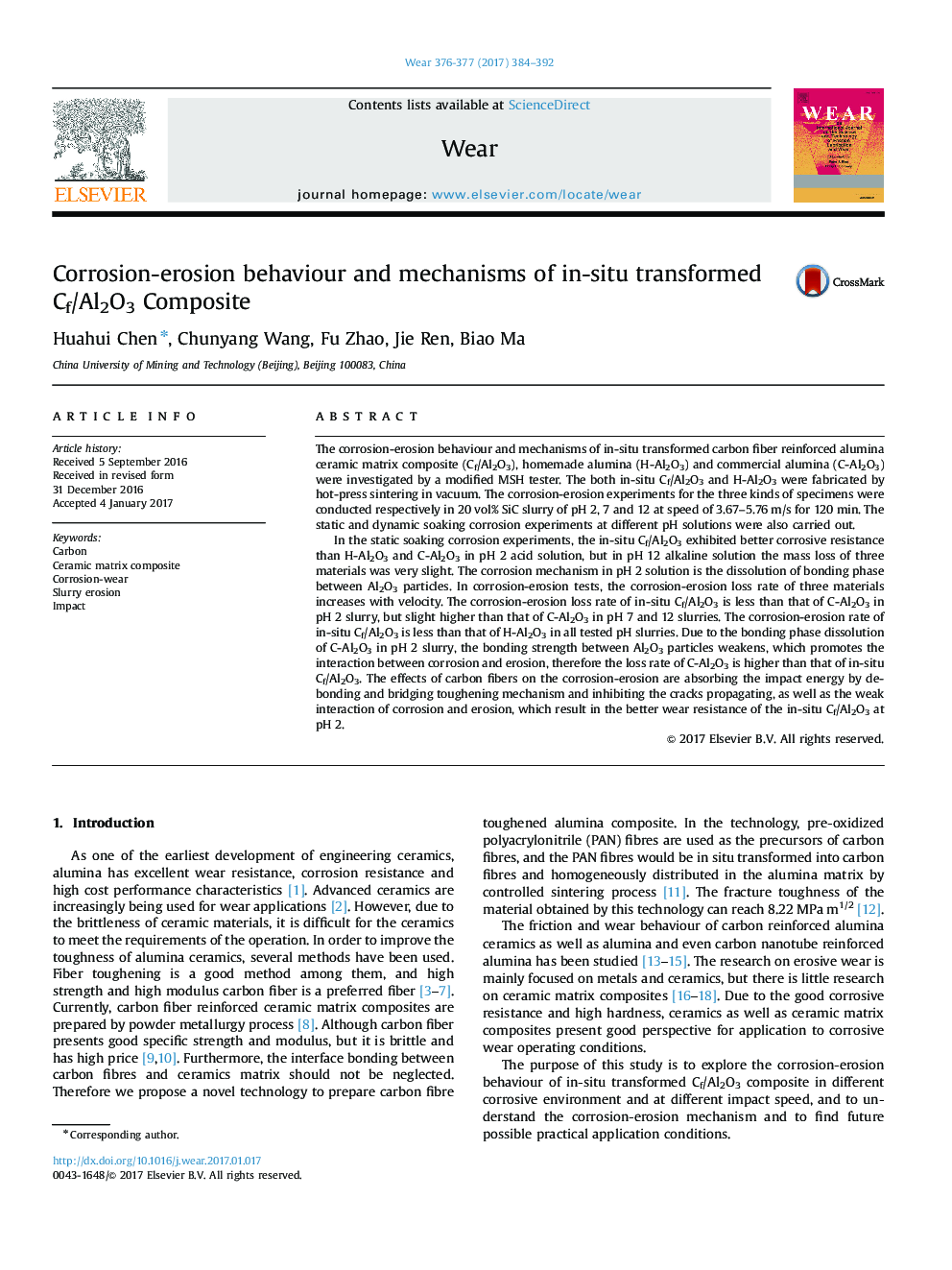| Article ID | Journal | Published Year | Pages | File Type |
|---|---|---|---|---|
| 4986706 | Wear | 2017 | 9 Pages |
Abstract
In the static soaking corrosion experiments, the in-situ Cf/Al2O3 exhibited better corrosive resistance than H-Al2O3 and C-Al2O3 in pH 2 acid solution, but in pH 12 alkaline solution the mass loss of three materials was very slight. The corrosion mechanism in pH 2 solution is the dissolution of bonding phase between Al2O3 particles. In corrosion-erosion tests, the corrosion-erosion loss rate of three materials increases with velocity. The corrosion-erosion loss rate of in-situ Cf/Al2O3 is less than that of C-Al2O3 in pH 2 slurry, but slight higher than that of C-Al2O3 in pH 7 and 12 slurries. The corrosion-erosion rate of in-situ Cf/Al2O3 is less than that of H-Al2O3 in all tested pH slurries. Due to the bonding phase dissolution of C-Al2O3 in pH 2 slurry, the bonding strength between Al2O3 particles weakens, which promotes the interaction between corrosion and erosion, therefore the loss rate of C-Al2O3 is higher than that of in-situ Cf/Al2O3. The effects of carbon fibers on the corrosion-erosion are absorbing the impact energy by debonding and bridging toughening mechanism and inhibiting the cracks propagating, as well as the weak interaction of corrosion and erosion, which result in the better wear resistance of the in-situ Cf/Al2O3 at pH 2.
Related Topics
Physical Sciences and Engineering
Chemical Engineering
Colloid and Surface Chemistry
Authors
Huahui Chen, Chunyang Wang, Fu Zhao, Jie Ren, Biao Ma,
